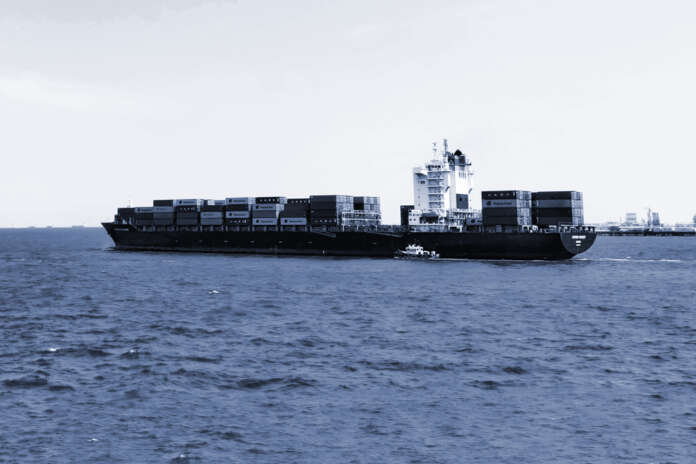
Upward pressure on charter rates and second-hand values of container ships has increased again amid vigorous tonnage demand at the start of the year. By Michael Hollmann[ds_preview]
Confidence in the container market is unwavering as 2022 is off to a brisk start. Those who expected the market to have hit a ceiling were proven wrong, with operators willing to up the ante on long-term employments for ships coming open not until the second half of the year in some cases.
The trend is illustrated by a rebound of the New ConTex since end of December. It gained almost 15 % over the past four weeks, bringing it back to almost 3.000 points by 20 January. It had peaked at 3.267 in October after a spate of short-term and round voyage fixtures for ships up to panamax class at unprecedented levels reaching around 200,000 $/day. This time the gains are driven mainly by improved long-term hire rates of 3–5 years, brokers say.
Hapag-Lloyd was reported to have secured the largest ship available so far this year, paying a firm 39,000 $/day for 60 months on the 4,200 TEU »Amalthea«, but with delivery not until July/August. Given the extremely tight supply situation in this segment throughout the year, »this fixture could look attractive for the charterer in the coming weeks with imminent increases on the horizon,« one broker commented. Only around a dozen units of a similar size are believed to come up for charter renewal in the next six months. A number of carriers have already posted requirements for panamax vessels, with top operators and smaller operators all fiercely competing for the rare positions this year. Some charterers would rather buy outright than charter in a bid to contain costs although ship values are hitting eye-watering levels as well.
Demand cascades down …
One Greek-owned Hanjin 4300 type is said to be attracting buying interest at a whopping 90-100 mill. $ with charter-free delivery in spring. The firming sentiment is also rubbing off on slightly smaller vessels as tonnage demand cascades down into the 3,500 and 2,500–2,800 TEU sectors. Highlights in the opening weeks of the year include a 3-year period for MPC Containerships’ 3,586 TEU »AS Nadia« at 61,000 $/day with US carrier Pasha Hawaii.
Not to be outdone, sub-panamax types saw rates edging higher quickly in a succession of deals in the first 2–3 weeks. Operators are already scouring for vessels in this class for lay-can dates as far ahead as the third quarter, say brokers who expect further improvements.
In the geared 2,500 TEU class, activity kicked off with the extension of a quartet of ships by Maersk at $ 45,000 per day basis 16-18 months, a relatively short commitment. Below 2,000 TEU, there were a number of short and medium-period fixtures for 1,700/1,800 TEU at very strong levels. Taiwan’s Yang Ming Line reportedly took the Wenchong 1700 »Bindi Ipsa« (1,815 TEU, gearless) at 80,000 $/day for a 1-2 month employment in Asia from March. Long-term interest remains strong as well, with 3-year periods on standard geared 1,700 TEU’s forecast to breach the 30,000 $/day-barrier soon.
Latest indications are that container loadings continue to grow at an average annual rate of +3-4 % compared with 2019 while effective fleet capacity remains heavily constricted by port and intermodal congestion. Amid the growing backlog of cargo and increased urgency to secure premium slots on sailings ex Far East ahead of Chinese New Year, freight rates recorded further increases up until the middle of January. In the wake of escalating spot rates, long-term rates for annual and multi-year contracts leapt higher as well, providing carriers with enhanced income certainty.
As Norwegian freight benchmarking platform Xeneta reported, long-term contract rates (minimum 3 months) for liftings from the Far East to North Europe were averaging 9,300 $/FEU at the start of January, close to a three-fold increase from levels at the start of 2021.
With further covid outbreaks and partial lockdowns in or around major port cities in China, delays in China are expected to keep container turnaround times stretched and equipment availability tight. Many commodity sectors are reporting enornmous backlogs of cargo that cannot be moved due to lack of containers.
Shipments of US cotton are lagging scheduled commitments to such an extent that markets are worried contracts could be cancelled due to non-performance, the Bremen Cotton Exchange has warned. Plenty of produce in Brazil also remains off-limits for European buyers, it said.
















